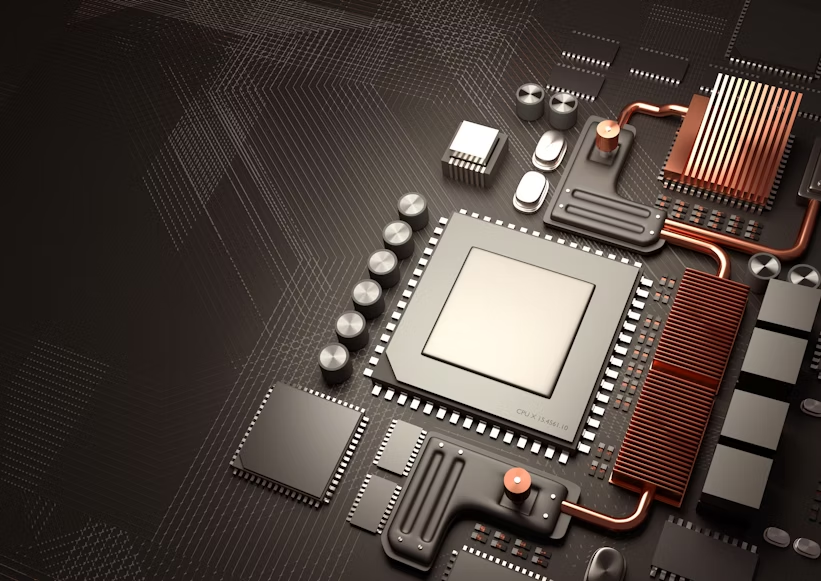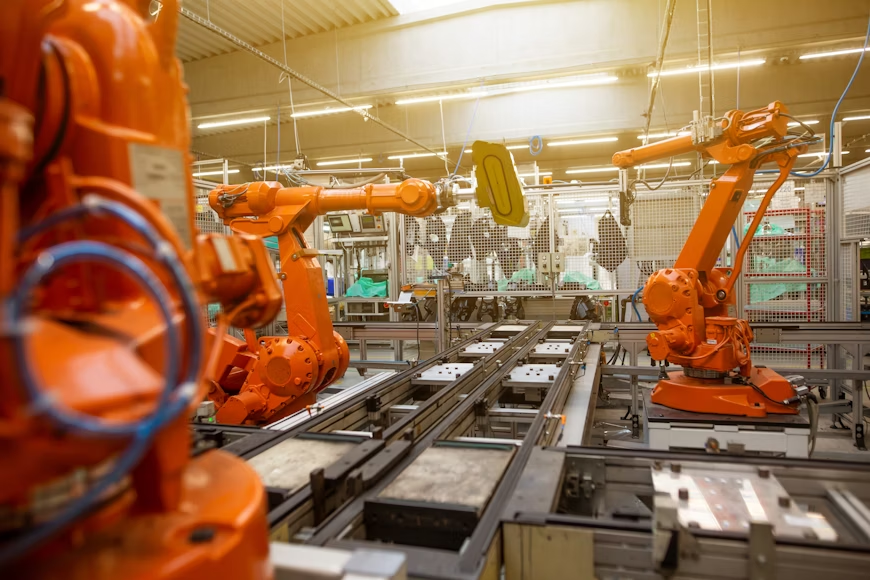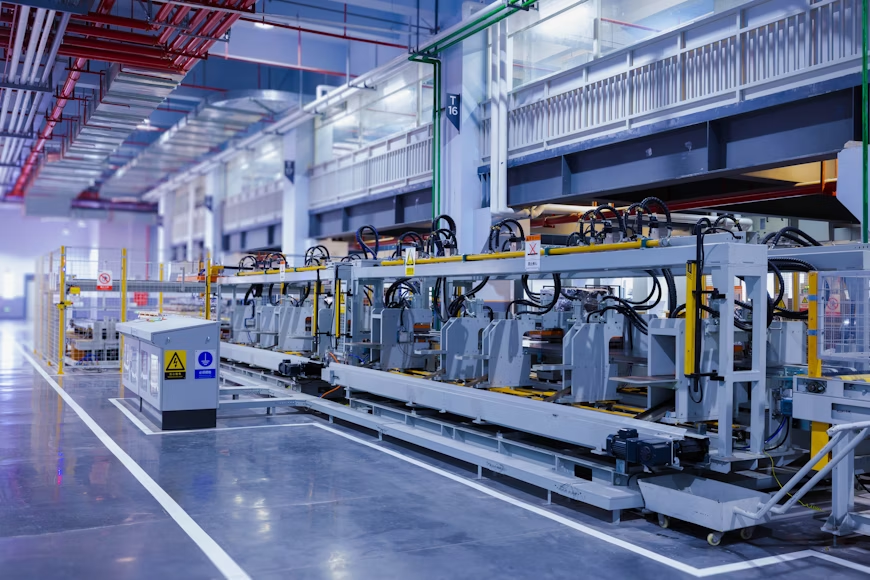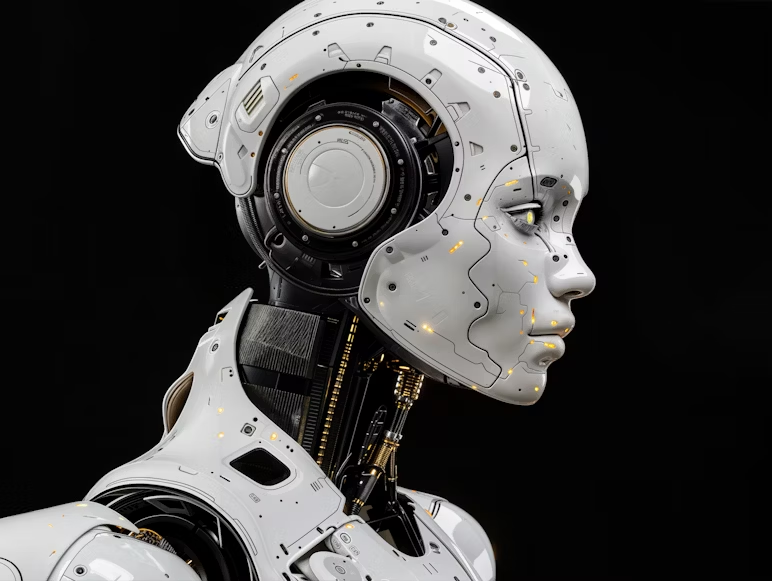Introduction
Artificial intelligence automation is the process of using technology to carry out jobs with little assistance from humans. It entails putting in place devices, software, and systems to carry out intricate, repetitive, or routine tasks precisely and effectively. Artificial intelligence automation transformed a number of industries over the last few decades, including manufacturing, healthcare, finance, agriculture, and services. It is crucial to Industry 4.0 and is essential for raising reliability, cutting expenses, and improving production.
A Brief History
Industrial Revolution Overview
Notable advancements during the 18th and 19th centuries. Early examples included conveyor belts, steam engines, and mechanised looms.
20th Century Automation Evolution
Originated from the ancient era with crude tools and machinery.
Digital technologies, robotics, and AI dominated the industry.
Development of electrical and electronic technologies like PLCs.
Intelligent and self-sufficient in the late 20th and early 21st centuries.
Types of Automation
Depending on its complexity and use, it can be divided into various categories:
Fixed or Hard
utilised in mass production, where a predetermined method is followed. Electronics and automobile assembly lines are two examples.
Programmable Automation
ideal for production in batches where machinery can be reconfigured to do various tasks.
Flexible or Soft
Enables rapid job switching with less setup time. This kind frequently uses AI and robotics.
Industrial Automation
frequently used in manufacturing, where processes are managed by sensors, actuators, and control systems.
Office Automation
Spreadsheets and workflow management systems are examples of office tools that increase administrative task productivity.

Home Automation
Is used in smart homes for appliance management, lighting, climate control, and security.
Key Components of Systems
Systems consist of a number of interrelated parts:
Sensors: Gather information from equipment or the surroundings.
Actuators: Perform tasks like moving robotic arms or opening valves.
Controllers: PLCs and microcontrollers are examples of controllers that analyse
Human-Machine Interfaces (HMIs): Systems may be monitored and controlled by users thanks to human-machine interfaces, or HMIs.
Software: Uses AI or algorithms to improve decision-making, perform diagnostics, and coordinate actions.
Applications of Automation
Numerous industries make extensive use.
1. Manufacturing
Manufacturing has been revolutionised by 3D printing, automated assembly lines, and robotic arms. It boosts output, lowers error rates, and enhances product uniformity.
2. Healthcare
Robotic surgery, medication delivery, patient data management, and diagnostic imaging are all made possible by the healthcare industry. Driven by AI, it facilitates telemedicine and early disease detection.
3. Agriculture
“Smart Irrigation Systems, Automated Tractors, Drones Enhance Farmers’ Yields”
- Preserve resources.
- Boost crop monitoring.
4. Retail and E-commerce
AI Enhances Customer Satisfaction and Business Productivity
- Personalised suggestions.
- Inventory control.
- Automated checkouts.
5. Finance and Banking
Chatbots, fraud detection software, robotic process automation (RPA) for handling repetitive tasks, and artificial intelligence (AI) for credit rating are examples in banking.
Benefits
There are many advantages to automation:
Cost Reduction: Reduces Long-Term Labor & Operating Expenses
Even with substantial early investments.

Improved Accuracy: Repetitive activities are carried out by machines with great precision, which lowers errors and flaws.
Enhanced Safety: Machines can perform hazardous tasks, lowering the number of accidents that occur at work.
Data Collection and Analysis: Real-time data collecting made possible by allows for predictive maintenance and well-informed decision-making.
Scalability: Systems are easily scalable to accommodate shifting needs.
The Future of Automation
Automation has a bright future and will probably be influenced by a number of trends:
1. Artificial Intelligence and Machine Learning
Automation systems will grow smarter as AI develops, gaining the ability to learn from data and make intricate decisions.
2. Internet of Things (IoT)
Smarter automation systems will result from improved machine integration and real-time communication made possible by IoT devices.
3. Cloud Computing and Edge Computing
Automation systems will be able to swiftly and remotely process and analyse enormous volumes of data thanks to these technologies.
4. Human-Robot Collaboration
Future automation will prioritise cooperation over human replacement.
5. Hyperautomation
AI, Machine Learning, Robotic Process Automation
- Automates business functions.
- Combines AI, machine learning, and robotic process automation.
Balancing Automation and Employment
Reskilling and Upskilling: To be competitive in the labour market, workers must receive training in new technologies.




